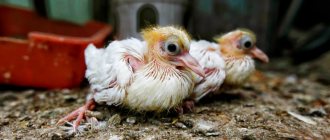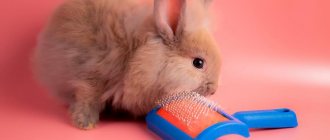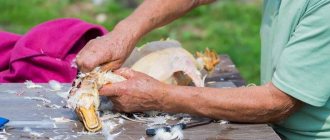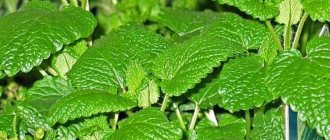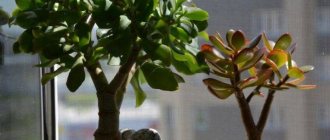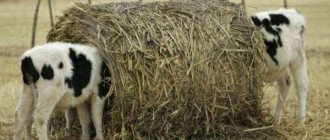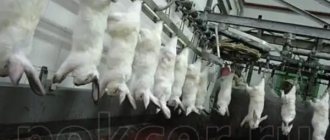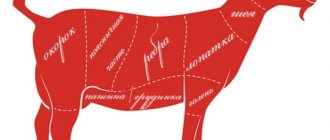Why does a rabbit need to have its nails trimmed?
Many breeders claim that a decorative rabbit needs to have its nails trimmed regularly. But in nature, they help the animal cling to the soil and other surfaces, and grinding occurs naturally. Therefore, beginners are often at a loss. As a result, overgrown nails interfere with rodents and cause a lot of discomfort.
There are many reasons for mandatory nail trimming:
- reducing the risk of developing pododermatitis;
- protection of the posture and spine of animals from deformation;
- reducing the risk of nails getting caught and pulled out on carpet or other surfaces;
- protection of limbs from dislocations and joint problems.
Is it possible to trim a pet's claws?
Breeding domestic decorative breeds of rabbits is becoming more and more popular every year. However, not everyone knows how to properly care for furry animals. One of the important procedures here is trimming the claws of your eared ward. This essential part of care must be carried out regularly.
There are a number of reasons why you need to trim the claws of rabbits of decorative varieties:
- Long keratinized growths on the paws interfere with the animal while moving. In addition, an overgrown claw can get caught on something, and the pet will damage its paw.
- Claws cause discomfort when moving. As a result, abrasions and calluses appear on the paw pads.
- Untrimmed rabbit claws are a common cause of deformed limbs.
- The animal may be injured or injure a person.
To care for your pet's paws, it is not necessary to contact a veterinarian. You can easily trim the claws of a decorative rabbit at home. You need to know the basic rules of the procedure.
Treatment frequency
The first nail trimming may be required as early as two months of age. If at this time the baby rabbit finds a new family, the owners receive detailed advice from the breeder.
In the absence of recommendations, the entire task of care falls on the shoulders of new family members.
Important! Rodents are susceptible to stress, so nail trimming is done carefully and infrequently.
Different breeds of rabbits have different rates of nail growth. For some, a haircut is recommended as early as 3 months, while for others – only for six months.
A number of factors also influence the growth rate:
- food quality;
- hereditary traits;
- breed characteristics;
- animal activity;
- conditions of detention.
The average break between procedures is 6–8 weeks. But a visual inspection of the limbs will tell more precisely. Also, the need for the procedure is indicated by the clicking sound of claws as the animal moves across parquet and linoleum.
How often to perform the procedure
They begin to trim the claws of young rabbits at 6 months, but sometimes this procedure can be carried out earlier. In some animals, they grow back by 2-3 months, so they are trimmed at this time.
The interval between procedures may vary, it all depends on the rate of growth of the claws, the activity of the pet and whether he goes for a walk, that is, whether he has the opportunity to grind his claws down or not, but on average it is 1.5 months. After approximately this period of time, the animals need to be examined.
You can determine that the procedure needs to be carried out by the characteristic sound that the rabbit makes as it moves across the floor.
Required Tools
Little rabbits have rather soft claws. To cut them, nail scissors or pedicure clippers are usually used. Adult pets will need a special tool - a nail clipper. It is sold at any pet store or pet salon and is intended for cats or dogs. The tool looks like a guillotine cutter or scissors.
Important! Ordinary scissors are not used on adult animals. They make my nails very crumbly.
There are models with or without a special limiter. The first option is preferable, especially for beginners. It allows you to choose the appropriate length of the nail without catching small vessels. The nail clipper should be made of steel, with well-sharpened blades and rubber lining on the handles.
Sexual issues in rabbits and reproduction
Puberty of decorative rabbits occurs at the 3rd or 4th month. If offspring are not planned, then different-sex individuals should be placed in different cages or enclosures.
The onset of puberty is detected by the following signs:
- the pet is aggressive, bites;
- there is increased activity;
- the rabbit marks corners and furniture in the apartment while walking;
- females make a nest;
- the animal ignores the tray.
There are no special pills that can stop sexual activity. This is where patience with educational measures comes in handy.
Castration or sterilization is required if the animal is excessively aggressive or for medical reasons. The procedure is recommended for young individuals.
Correct fixation of the rabbit
Before the grooming begins, your pet often shows anxiety and fear. This is especially true for animals undergoing the procedure for the first time. In this state, cutting is impossible - the rabbit breaks free and tries to escape. The owner must calm him down, pick him up and stroke him.
Attempts to escape will also be made in case of strong fixation. If this is the reason, it is enough to weaken it. There is a special sequence for correctly picking up the animal before the procedure:
- Place the rabbit in your arms.
- Grab it from the sides and squeeze it a little when trying to escape.
- Place the rabbit on its back so that its head is on your elbow.
- With your left hand, hold the animal and the paw on which the claws will be trimmed.
- Use your right hand to perform the procedure itself.
Important! It is forbidden to squeeze the pet's back, as this can cause injury.
To make the task easier, the animal is secured with a towel. The paws will be removed from it one by one. It is advisable to carry out the first haircut with an assistant. One person holds the rabbit securely while the other trims its nails.
Questions about decorative rabbits from beginners
Before purchasing a decorative rabbit, future pet owners ask many questions.
Do decorative rabbits stink?
Young rabbits do not have any unpleasant odor. The fur can only absorb the smell of bedding and food. An unpleasant aroma may come from an adult animal, as sexually mature individuals begin to mark the territory, and old rabbits may emit an odor if they have any diseases. If the animal is provided with proper care and cleaning is carried out regularly, then there will be no reason for the appearance of an unpleasant odor.
How do rabbits sleep?
Rabbits are most active in the morning and evening, and they sleep during the day and at night if nothing disturbs them. They spend 8-9 hours sleeping a day. The animals' eyes are almost always open.
Animals choose a place to sleep individually. Some can sit in the middle of the cage, while others can hide in the corner. Like people, they can be in a light doze, or they can sleep soundly, but they easily wake up from the slightest rustle.
Is it necessary to castrate a decorative rabbit and at what age is the procedure carried out?
Castration for decorative domestic rabbits is a necessary measure. Animals are castrated to avoid unwanted offspring, as well as to prevent the development of diseases of the reproductive system.
Neutered rabbits become calmer and do not show aggression. The operation must be performed between the ages of 4 months and 2 years. Some experts believe that the procedure should not be performed on animals before they reach 6 months of age.
Step-by-step instructions for trimming nails
Step-by-step instructions will help you trim your rabbit’s claws correctly:
- The easiest way to start the procedure is with the front paws. To maximize the exposure of the nail, move the hair and press on the soft pad. Under good lighting, the internal structure of the claw will become visible. Namely, the pulp is tissue with capillaries and nerve endings. Thanks to the blood vessels, it is clearly visible.
- Only the dead areas of the nail are trimmed. For better confidence, removal is carried out in parts so as not to touch the pulp and not cause severe pain to the animal.
- After trimming, the claw is inspected for excess parts. Sharp ends are sharpened with a file or cut off.
- Rabbits need to have all their nails trimmed, even those on their vestigial toes.
- If the animal is wrapped in a towel, a 5-minute break is taken after each clipped paw. It is necessary to normalize body temperature and prevent the animal from overheating.
- At the end of the procedure, the pet is rewarded with a treat.
Selecting a location
Choosing a place for a rabbit
You should not place a cage with a rabbit near a radiator or near air conditioners. For these pets, any overheating is dangerous. At a temperature of +20°C, rabbits will be very comfortable. Animals are afraid of other pets, computers, TV, bright sunlight, and drafts.
It would be ideal to place the cage away from noise sources and from a window.
It is important that the place is bright and calm. The hallway, kitchen, corridor will not fit
When ventilating the room, avoid drafts. If you place the cage on the loggia, you will increase the likelihood of the animal overheating. Keep in mind that the loggia must have good ventilation and suitable temperature conditions.
For owners of private houses, you can make an enclosure with a canopy and fence it with a small fence. This way, the animal will not be afraid of either rain or overheating, and you can let the rabbit walk outside in the summer.
What to do if a capillary is damaged
If the claw is not trimmed correctly and the pulp is damaged, it will bleed. In this case, hydrogen peroxide or another disinfectant and cotton wool are prepared before the procedure.
Before cutting, hands are washed with soap and nail clippers are wiped with alcohol infusion. In case of injury, the wound is disinfected. Cotton wool or a cotton pad is also applied until the bleeding stops completely. No more manipulations are required. After a short break, the haircut procedure continues.
Trimming nails is an important grooming procedure for rabbits. You don’t have to resort to regular visits to the veterinary clinic. To do this, you will need to independently study the cutting process and purchase the necessary tools. After 1-2 procedures, there will be no trace of uncertainty and worries.
Contacting a specialist: all the pros and cons
It is advisable to apply for a rabbit claw trimming procedure if you have a small number of pets on the farm or for breeders of ornamental animals as pets.
If the farm is of impressive size, then this will lead to significant financial expenses, since rabbit manicure is expensive.
Trusting a professional is often the best option when it comes to caring for your rabbit's claws.
For this reason, large business rabbit breeders are trying to master the shearing technique on their own. If the procedure leads to pain and bleeding, and there is no other way, then keep in mind that next time the wounded little ear will resist as much as possible, to the point of not being able to be picked up.
Despite this, a professional service has many advantages:
- no unpleasant consequences; an experienced veterinarian will not allow cutting of a live area;
- professional and very sharp nail clippers, the procedure is carried out quickly;
- painless for the animal, the doctor performs all actions confidently;
- Lack of stress for the owner Many owners experience anxiety and stress before, during and after the event.
The high cost of a manicure is not the only drawback, but the second disadvantage is more related to the negligence of the veterinarian; if he does not disinfect the instruments in accordance with the norms and requirements, there is a risk of an infectious disease in the animal.
How to properly trim a dog's nails with a nail clipper
Manipulation to shorten the claw should take place with minimal discomfort for the pet
To prevent the procedure from causing unnecessary anxiety, it is important to know the sequence of actions:
- Inspect both paws for cracks, scratches and damage to the pads. If there is any of the above, the manicure should be postponed until the wound is completely healed. A split nail will require a visit to your veterinarian to prescribe medication.
- You need to place the dog’s leg on the floor, and place the nail clipper at an angle of 45 degrees and set it 1.5-2 mm from the tip. You should cut off no more than 0.5 cm as a maximum - the length of the removed part depends on the size of the dog. The black plate should be cut no more than 0.5 cm at a time. If a light area appears, you must stop immediately. Well-trained dogs can give a paw so that the owner can trim their claws while hanging.
- The cut occurs by pressing the handles of the nail clipper. You need to press sharply, but without unnecessary effort, without jerking your paw.
- Next, you should process the uneven edges with a nail file, taking the dog’s paw in your hand. In case of a cut, moisten the wound with hydrogen peroxide.
Black claws are considered the most difficult to trim. On beige and light-colored claws, it is easy to see blood vessels, which will greatly facilitate the process. The pulp appears as a darker area.
You can see the approximate location of the pulp with blood vessels on the black claw by the location of the hollow. Sometimes the depression is on the side
Veterinarians advise focusing on the hollow and pruning very carefully, do not try to cut everything off at once
Possible errors and complications
Errors and complications during the dog nail trimming procedure are not that rare. They are often associated with the behavioral characteristics of animals and with the individual characteristics of the color and anatomical structure of the claws
In this context, it is important to consider a number of aspects
- If your animal's nails are dark in color (black claws), which makes nail trimming difficult, you should consult a veterinarian. But it is better to visit him and watch his work, as an example for future independent work.
- If the dog twitches sharply and does not allow the procedure to be carried out, then it should be wrapped in a diaper (for small animals). Two people are involved in the procedure - one fixes the dog in his lap, the other frees the paw and begins the haircut.
- If the pet is struggling and whining, but the nail bed is clearly not affected, then the dog most likely has a high level of sensitivity. You can purchase a solution of lidocaine, which you can use to treat your dog’s paw a few minutes before trimming the nails.
- It is useful to record the dates of haircuts in a special dog care calendar. This will simplify the process of monitoring procedures.
- If the existing tool is not able to cope with the thickness of the claw, then you should try to remove the claw with a nail file.
Open wounds in dogs resulting from procedures should be carefully avoided. If one does appear and begins to bleed, you cannot allow the pet to hide in a dark corner and self-medicate, licking its wound. The supplies necessary to provide medical care must be prepared in advance and be on hand. This could be a special hemostatic powder, corn starch or just a bar of soap, hydrogen peroxide, chlorhexidine to disinfect the wound, bandages or napkins.
If the injury is minor, then it is simply disinfected with peroxide or chlorhexidine. Often a special hemostatic pencil is used, which is pressed against the damaged area of the claw for a few seconds. The pencil promotes the formation of a dense clot that prevents bleeding. During first aid, it would be a good idea to offer your pet some kind of treat to distract her and prevent negative emotions from becoming attached to the nail trimming procedure.
Improper or careless care of your pet's claws leads to a number of consequences, often extremely unpleasant.
- The claw grows in. For example, an untreated “fifth toe” bends and grows into the dog’s paw pad, causing it severe pain. Such a claw, breaking the skin, allows infectious bacteria to enter the wound and the development of fungi. When experiencing pain, the animal cannot stand on its paw.
- The claw bed (felon) becomes inflamed. This disease is caused by injuries to the fingers, claws or adjacent tissues. A purulent swelling occurs at the site of inflammation. The animal's body temperature rises and its appetite decreases. Unpleasant odors emanate from the injured paw, and the wound begins to fester intensely.
- The claws break off, causing very painful conditions. This occurs when the claw is too long, which, with sudden movements, clinging to the surface, can come off and disrupt the integrity of the blood vessel. This usually results in severe bleeding.
In some cases, dog owners can treat emerging painful conditions on their own. So, with early inflammation of the claw bed, regular antiseptic treatment of wounds with a chlorhexidine solution is sufficient. In this case, it is useful to apply wound-healing dressings, which need to be changed periodically and monitored for their safety. You can use a special veterinary cap until the wound heals.
When caring for an animal, you should always remember that untimely or careless trimming of animal claws is fraught with consequences such as:
- disorders in the development of joints;
- negative and irreversible changes in paw position;
- deformation in gait and, as a result, in the pet’s spine;
- constant pain;
- long-term illnesses.
Sometimes, in order to save the life of a pet, it is necessary to undergo declawing operations. Such indications include the following:
- ingrown claws – complicated cases;
- improper development of the claw, fused claws;
- the occurrence of gangrene and other serious consequences;
- serious injuries and inflammation, frostbite and burns;
- oncological processes.
They also remove the so-called wolf claw (“dewclaw”) – rudimentary claws. Operations comply with breed standards. In developed countries, the operation is condemned by human rights activists.
To learn how to trim a dog's nails at home, watch the following video.
How to cut your nails correctly
When trimming nails, it is important not to touch the living part in which the blood vessels are located, because this can cause heavy bleeding and severe pain in the ear. This area of the nail is located at its base and has a reddish or dark brown color. On light white nails it is easy to identify a live area - it is visible to the naked eye. It is better to illuminate dark claws with a flashlight. Through the dark nail plate, blood vessels will be visible in the light.
You can determine the living zone of a rabbit's nail by simply applying pressure. If, when pressing a claw, a rabbit pulls out a limb, it means that a living area has been affected; if it behaves calmly, then this area can be cut off.
Having decided on the circumcision area, you can begin the procedure:
- First, trim the nails on the front paws, and then on the hind paws.
- You need to cut the selected area of the nail plate carefully and quickly. The nail clipper blade is placed parallel to the limb. The cut is made approximately 3-5 mm from the edge of the nail. After trimming, the cut is smoothed with a manicure file. The claws on all limbs are trimmed in the same way.
During the procedure it is recommended:
- do not hurry;
- do all manipulations very carefully;
- give the pet the opportunity to rest;
- Encourage your little eared dog with treats.
